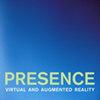CRYSTAL: Building Multicontext Virtual Environments
IF 0.7
4区 计算机科学
Q4 COMPUTER SCIENCE, CYBERNETICS
引用次数: 10
Abstract
Current virtual environment systems are, for the most part, dedicated to specific applications such as engineering or surgery. The CRYSTAL project applied the concept of crystals, or 3D windows, to segment the virtual world into independent volumes, which may interact with each other. The contents of individual crystals can be very different from crystal to crystal, so the resulting virtual environment (VE) is not restricted to any unique context, and it is suitable as a general-purpose workspace. Crystals are created and owned by independent programs called modules, which serve as functional elements of the VE. There are basic modules to provide common functions, such as navigation, wand control, and so on. Extra modules can be launched to add content and functionality to the VE, and the modules can also be terminated interactively. Unlike pipelined systems for VE design, CRYSTAL modules are designed to self-assemble and resolve any interface conflicts automatically. As a result, they do not place a high demand on user proficiency in customizing VEs for a variety of uses.CRYSTAL:构建多上下文虚拟环境
目前的虚拟环境系统在很大程度上是专门用于工程或外科等特定应用的。水晶项目应用了水晶或3D窗口的概念,将虚拟世界分割成独立的体量,这些体量可以相互作用。单个晶体的内容可能因晶体而异,因此生成的虚拟环境(VE)不局限于任何独特的上下文,它适合作为通用的工作空间。晶体由称为模块的独立程序创建和拥有,这些程序作为VE的功能元素。有一些基本模块提供常用功能,如导航、魔杖控制等。可以启动额外的模块来为VE添加内容和功能,也可以交互式地终止这些模块。与VE设计的流水线系统不同,CRYSTAL模块设计为自组装并自动解决任何接口冲突。因此,它们对用户在为各种用途定制ve方面的熟练程度没有很高的要求。
本文章由计算机程序翻译,如有差异,请以英文原文为准。
求助全文
约1分钟内获得全文
求助全文
来源期刊
CiteScore
2.20
自引率
0.00%
发文量
8
审稿时长
>12 weeks

 求助内容:
求助内容: 应助结果提醒方式:
应助结果提醒方式:


